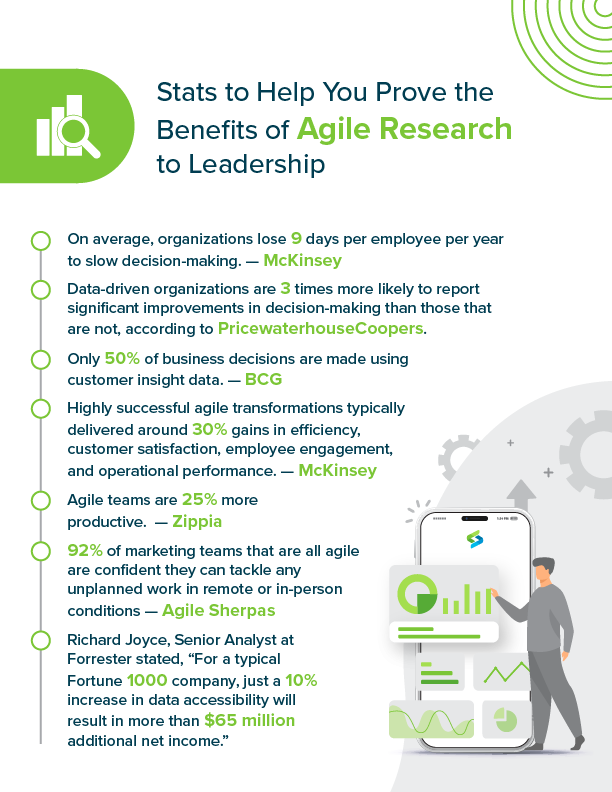If the first step in implementing agile research at your organization is to assess your current situation, the second is most certainly to get leadership buy-in.
Without leadership’s support for agile research, it will never get off the ground. Luckily, making your case is not an uphill battle, if you prepare yourself.
How to Assess Your Leadership Support Needs for Agile Research
- Who are the key stakeholders needed to move forward?
- Do the stakeholders span across different teams (VP of Insights vs CMO vs Data Science Team)?
- Can technology help achieve all or some of your KPIs?
- Would you consider your team a revenue driven department or a cost centre within your company?
- Who owns the budget? Could it be single team or multiple teams that need to come together to fund your vision?
Once you have the answers to the above, you can better tailor your arguments to demonstrate why your organization will benefit from agile research and how you plan to make the roll-out successful. This is where you need to pull together some concrete and persuasive numbers. Here are a few to help you get started:

The above numbers help make a compelling case for how your organization stands to benefit from agile research at a high level. To round out your argument, calculate specific numbers that your organization could hope to achieve with the help of agile research.
How to Calculate the Benefits of Agile Research in Your Organization
- Determine the amount of time that could be saved by the insights team if it conducted shorter, more frequent projects and made research and performance results available to more teams across your organization.
- Present leadership with the amount of time saved in creative, product, or marketing development processes by incorporating consumer feedback at regular intervals.
- Show how much more often the voice of the customer can be incorporated into the decision-making process.
- Present the potential cost savings of automating parts of the research process.
- Create a comparison of the cost of conducting many smaller projects frequently against the cost of conducting much larger projects at longer intervals without customer feedback.
As you determine the numbers above, it may be helpful to look at a specific use case you have in mind. If you are successful, make this use case your test project to pilot your new agile research process. This helps with leadership buy-in by reducing the initial risk. Potential use cases could be:
Use Cases for Agile Research
- Testing which limited time offers resonate most with consumers based on their regions
- Testing which ad is most likely to induce potential customers to purchase
- Testing what features of a new product are most important to Gen Z buyers
- Testing where customers have difficulty with a new mobile app experience
If you determine your use case but struggle to put numbers around it, ask an expert. Most agile research technology providers will be happy to help estimate the timing and cost of a specific use case you have in mind. Not only do they know the tools best, but they can often provide insights and options you may not have considered. You’ll be equipped to go to leadership with both high-level reasons to make the agile research transition and a specific use case with actual timelines, costs, and tools associated with it.
If you missed the first step, head on over to:
Or read on to step 3:










 3 Minutes
3 Minutes 











